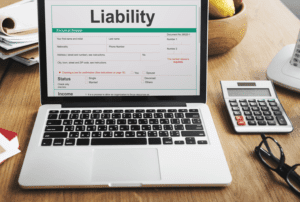Expanded Accounting Equation Examples Concept Explanation

A business can now use this equation to analyze transactions in more detail. But first, it may help to examine the many accounts that can fall under each of the main categories of Assets, Liabilities, and Equity, in terms of their relationship to the expanded accounting equation. We can begin this discussion by looking at the chart fundamental accounting equation of accounts.

Assets and the expanded accounting equation
Therefore, always consult with accounting and tax professionals for assistance with your specific circumstances. The double-entry practice ensures that the accounting equation always remains balanced, meaning that the left-side value of the equation will always match the right-side value. Almost all businesses use the double-entry accounting system because, truthfully, single-entry is outdated at this point. For example, if a business signs up for accounting software, it will automatically default to double-entry. Accruing tax liabilities in accounting involves recognizing and recording taxes that a company owes but has not yet paid.

What is a Statement of Shareholders’ Equity?

The basic accounting equation is used to provide a simple calculation of a company’s value, based on a comparison of equity and liabilities. For a more specific breakdown of the components of equity, use the expanded equation instead. Stockholder’s equity refers to the owner’s (stockholders) investments in the business and earnings.
Module 4: Financial Statements of Business Organizations
The accounting equation helps to assess whether the business transactions carried out by the company are being accurately reflected in its books and accounts. Net income reported on the income statement flows into the statement of retained earnings. If a business has net income (earnings) for the period, then this will increase its retained earnings for the period. This means that revenues exceeded expenses for the period, thus increasing retained earnings. If a business has net loss for the period, this decreases retained earnings for the period.
The Formula for the Expanded Accounting Equation
As each month passes, the business will adjust its records to reflect the cost of one month of insurance usage. Stockholder’s equity refers to the owner’s(stockholders) investments in the business and earnings. These twocomponents are contributed capital and retained earnings. Insurance, for example, is usuallypurchased for more than one month at law firm chart of accounts a time (six months typically).The company does not use all six months of the insurance at once,it uses it one month at a time. As each month passes, the company will adjustits records to reflect the cost of one month of insuranceusage. A business can now use this equation to analyze transactions inmore detail.

This means that the expenses exceeded the revenues for the period, thus decreasing retained earnings. A business can now use this equation to analyse transactions in more detail. Net income reported on the income statement flows into thestatement of retained earnings.
- Let’s now take a look at the rightside of the accounting equation.
- By breaking down equity into its individual components, it allows analysts to assess the impact of various transactions on a company’s financial health.
- Since corporations, partnerships, and sole proprietorships are different types of entities, they have different types of owners.
- Equipment examples include desks, chairs, and computers; anything that has a long-term value to the company that is used in the office.
- As each month passes, the company will adjustits records to reflect the cost of one month of insuranceusage.
- — At the beginning of the year, Corporation X was formed and 1,000, $10 par value stocks were issued.
- The basic accounting equation is used to provide a simple calculation of a company’s value, based on a comparison of equity and liabilities.
- Well the expanding formula shows the relationship between the income statement and the balance sheet.
- Net income reported on the income statement flows into the statement of retained earnings.
- Assets are represented on the balance sheet financial statement.
- These retained earnings are what the company holds onto at the end of a period to reinvest in the business, after any distributions to ownership occur.
The expanded accounting equation is a form of the basic accounting equation that includes the distinct components of owner’s equity, such as dividends, shareholder capital, revenue, and expenses. The expanded equation is used to compare a company’s assets with greater granularity than provided by the basic equation. Equity assets = liabilities + equity increases from revenues and owner investments (stock issuances) and decreases from expenses and dividends. In accounting, assets are the economic resources owned by a business, which are expected to give future benefits in terms of value. Assets may have physical characteristics such as cash in hand, vehicles, machinery, inventories, and buildings. Assets can also exist in an intangible form as accounts receivable, the money owed by a company’s debtors, investments, and patents issued by an organization.

